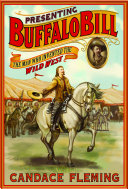2018 School Spending Survey Report
Presenting Buffalo Bill: The Man Who Invented the Wild West
288p. bibliog. notes. photos. Roaring Brook. Sept. 2016. Tr $19.99. ISBN 9781596437630.
COPY ISBN
VERDICT An informative examination of Buffalo Bill and his legacy for the middle and high school set, and to be handled with care.
RELATED
ALREADY A SUBSCRIBER? LOG IN
We are currently offering this content for free. Sign up now to activate your personal profile, where you can save articles for future viewing





Be the first reader to comment.
Comment Policy:
Comment should not be empty !!!